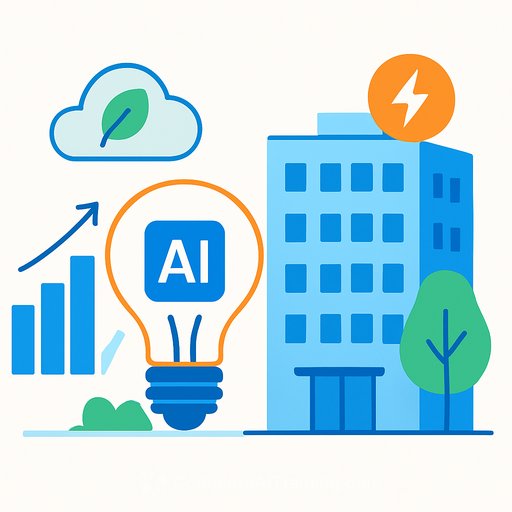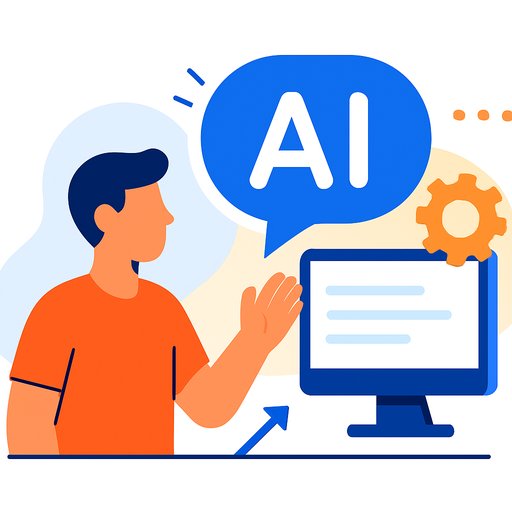How AI Buildings Cut Energy Use: Insights from Schneider Electric
Buildings don't need more hardware; they need smarter decisions. That's the premise behind Schneider Electric's approach to AI-enabled buildings, led by Manish Kumar, EVP of Digital Energy. The goal is simple: cut energy use, lower emissions, and keep people comfortable without the constant manual tuning.
Schneider Electric reports progress on a Science Based Targets initiative (SBTi) validated path to a 25% absolute carbon reduction across its value chain by 2030 and net zero CO₂ by 2050. The company also cites 734 million tonnes of CO₂ saved and avoided for customers since 2018.
What are AI-enabled buildings?
They're connected, intelligent environments that use real-time data from HVAC, lighting, air quality, and occupancy to self-adjust. Think of them as "living" systems that continuously respond to weather, demand, and usage. The outcome: less waste, more comfort, fewer surprises.
These systems also predict maintenance needs and coordinate across assets, so facilities don't run blind or overreact to alarms. For IT and Dev teams, the data layer becomes the control surface.
Why this model is more sustainable
With AI, the building only does what's needed, when it's needed. Algorithms align setpoints with occupancy patterns and weather forecasts, trimming energy use without sacrificing comfort.
They also orchestrate on-site renewables and storage to lower grid draw during peaks. Schneider Electric notes customers have cut emissions by around 15% and saved up to US$10m on green energy procurement through these strategies.
Proven impact areas
- HVAC optimisation: In Stockholm, AI-driven control in educational buildings cut electricity use by 8.93% and reduced CO₂ emissions by 259 tonnes over four years.
- Predictive maintenance: Detects drift and faults early, reducing downtime and service calls.
- Dynamic load balancing: Allocates energy to the most critical loads and shifts noncritical demand.
- Grid interaction: Preps buildings for demand response and time-of-use pricing while protecting comfort.
The Energy Command Center (ECC)
The ECC is a central AI hub that monitors and optimises energy across buildings, campuses, or even city districts. It integrates HVAC, lighting, data centers, and other critical systems to move operations from manual to autonomous.
Results scale fast: at Capgemini's 23 campuses in India, the ECC reduced energy consumption by 25 GWh and saved €3m (about US$3.5m) while transitioning to 100% renewable electricity.
AI-driven cities and citizen impact
Smarter infrastructure brings down energy bills, improves air quality, and stabilises comfort across seasons. It also helps city leaders hit climate targets and stay compliant without adding layers of complexity for operators.
There's growing interest from consumers installing solar and using smart home controls. With AI making decisions in the background, more households can sell energy back to the grid and participate in city programs without extra effort.
What IT, Dev, and Operations should do next
- Operations: Start with metering and a clean baseline. Standardise setpoints, scheduling, and alarms. Pilot AI on a high-variance site (e.g., mixed-use building) to prove savings quickly.
- IT: Secure the stack (network segmentation, MFA, least privilege). Normalise data across BACnet/Modbus/MQTT. Plan edge-to-cloud data flows and retention by use case.
- Developers: Build against open APIs and digital twins. Use simulation and staged rollouts before applying new control strategies to live environments.
Implementation checklist
- Map assets, controllers, sensors, and data quality (what's missing, what's noisy).
- Integrate BMS, metering, and IoT streams into a single data model.
- Deploy an ECC pilot with clear KPIs: kWh/m², peak demand, comfort scores, CO₂ intensity.
- Automate measurement and verification so savings are trusted and repeatable.
- Create playbooks for seasonal changes, occupancy shifts, and utility events.
- Report progress against validated climate goals such as the Science Based Targets initiative.
Key numbers Schneider Electric reports
- 25% absolute carbon reduction target across the value chain by 2030; net zero CO₂ by 2050 (SBTi validated trajectory).
- 734 million tonnes of CO₂ saved and avoided for customers since 2018.
- 1,000 top suppliers reduced CO₂ emissions by 48% to date.
- No net biodiversity loss in operations by 2030, supported by water conservation and local restoration plans.
Where AI building tech fits best
High-complexity sites benefit first: hospitals, airports, university campuses, large corporate offices, cities, and dense urban districts. Data volumes are high, the stakes are higher, and small percentage gains translate into big numbers.
That's where autonomous optimisation, predictive maintenance, and load orchestration make the biggest difference.
Skills and enablement
If your teams need practical training to scope, build, and run AI building projects, explore role-based programs here: AI courses by job. Build capability while you execute.
The takeaway
AI-enabled buildings cut waste, cut cost, and cut emissions. Start with your data, prove value with a focused pilot, and scale through an Energy Command Center model. The technology is ready-what matters now is disciplined execution.
Your membership also unlocks:










